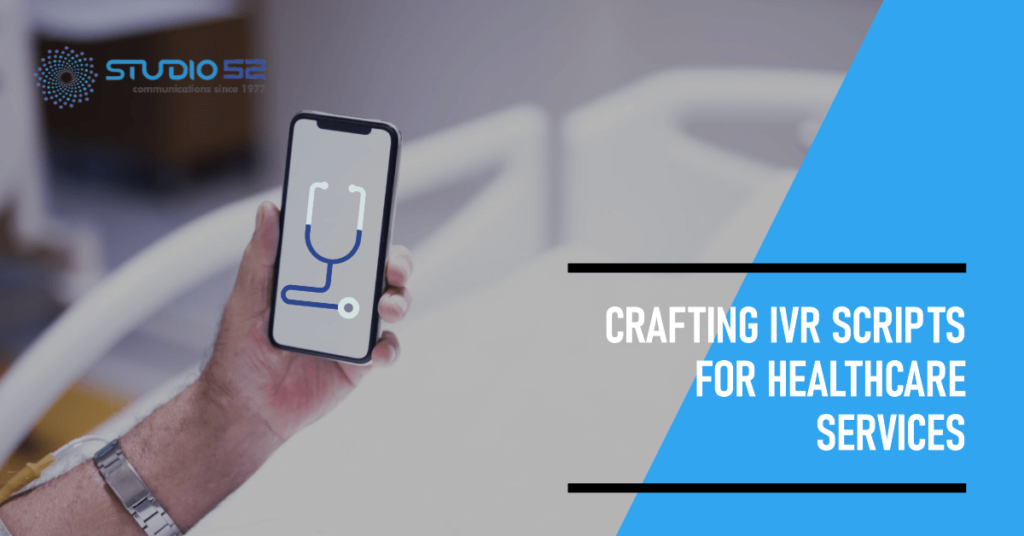Creating an Interactive Voice Response (IVR) script for healthcare services is a delicate task that requires attention to detail, empathy, and technical precision. An effective IVR system can significantly enhance patient experience, streamline operations, and improve overall communication between healthcare providers and patients. However, there are several critical elements that are often overlooked during the creation of these scripts. Below, we explore these commonly missed aspects and how addressing them can lead to a more effective and patient-centric IVR system.
Table of Content
1. Patient-Centric Language
One of the most common oversights in healthcare IVR scripts is the use of overly technical or clinical language. Patients come from diverse backgrounds and may not understand medical jargon or complex terminology. Using simple, clear, and empathetic language is essential to ensure that patients can easily navigate the system and feel supported throughout their interactions. The tone should be warm and reassuring, reflecting the care and compassion that patients expect from their healthcare providers.
2. Clear Navigation and Options
Another frequent issue is overloading the IVR system with too many options or presenting menu choices that are unclear or confusing. Patients should not have to struggle to find the information they need or to reach the correct department. Limiting the number of options and ensuring they are clearly articulated can help patients navigate the system more efficiently. It’s also important to structure the menu logically, with the most frequently used options placed at the beginning of the call.
3. Emergency Handling
In healthcare, emergencies can happen at any time, and it’s vital that the IVR system prioritizes these situations. A common mistake is not providing a clear and immediate option for emergency calls at the very beginning of the IVR menu. By directing patients to the appropriate emergency care right away, healthcare providers can ensure that urgent needs are met without delay.
4. HIPAA Compliance
Patient privacy is paramount in healthcare, and any IVR system must be designed with HIPAA compliance in mind. Unfortunately, some scripts may inadvertently ask for sensitive information or fail to reassure patients about the security of their data. It’s crucial to avoid requesting unnecessary personal information and to include messaging that reassures patients about how their data is protected.
5. Personalization
Healthcare is a personal experience, and patients appreciate it when their interactions with healthcare providers feel tailored to their needs. However, many IVR scripts offer a one-size-fits-all approach that can leave patients feeling disconnected. Personalizing the experience—such as recognizing returning patients by name or offering language options—can significantly improve patient satisfaction and engagement.
6. Redundancy Avoidance
Repetition can be frustrating for patients, especially when they are required to enter the same information multiple times during a call. This is a common issue in IVR systems that are not designed with streamlined processes in mind. To enhance the patient experience, healthcare providers should ensure that information entered by patients is carried through the call, reducing the need for redundant steps.
7. Wait Time Management
Long wait times are a major pain point for patients using IVR systems. While it’s sometimes unavoidable, it’s essential to address or minimize patient wait times whenever possible. Features like call-back options or informing the patient of the estimated wait time can go a long way in reducing frustration and improving the overall experience.
8. Clear Instructions for Complex Tasks
Healthcare tasks, such as scheduling appointments or contacting a specific department, can be complex and may require detailed instructions. A common oversight is providing vague or unclear directions that leave patients confused. To avoid this, break down complex tasks into simple, step-by-step instructions that guide the patient through the process.
9. Voice and Tone
The voice and tone used in the IVR script are critical to how patients perceive the interaction. An unengaging or robotic tone can frustrate or alienate patients, making the experience feel cold and impersonal. Using a warm, friendly, and professional voice-over that aligns with the healthcare brand helps create a positive and comforting experience for patients.
10. Accessibility Features
Healthcare services must be accessible to all patients, including those with disabilities or language barriers. Unfortunately, accessibility is often overlooked in IVR script design. Offering options for non-English speakers, hearing-impaired patients, or those who may need additional assistance is essential for creating an inclusive and patient-friendly system.
11. Testing and Feedback
Thorough testing of the IVR system with real patients and healthcare staff is often missed, leading to potential issues that could have been avoided. By conducting user testing and gathering feedback, healthcare providers can refine the script and ensure it meets the needs of its users. This iterative process is crucial for creating an IVR system that is both effective and patient-centric.
12. Follow-up and Updates
Finally, healthcare IVR scripts should not be static. Failing to regularly update the script or provide follow-up options for patients can result in outdated information and missed opportunities for engagement. Regularly reviewing and updating the script to reflect changes in services and including options for patients to leave feedback or request follow-up communication are key practices for maintaining an effective IVR system.
In the healthcare industry, where patient experience is of utmost importance, a well-crafted IVR script can make a significant difference. By addressing the often-overlooked aspects of IVR script creation—such as patient-centric language, clear navigation, HIPAA compliance, and accessibility—healthcare providers can ensure that their IVR systems are both efficient and compassionate.
At Studio52, we understand the unique challenges of creating IVR scripts for healthcare services. Our team specializes in designing and producing customized IVR solutions that prioritize patient needs, streamline communication, and enhance the overall experience. Whether you’re looking to improve an existing IVR system or develop a new one, Studio52 is here to help you create a patient-friendly IVR script that meets the highest standards of care and professionalism. Let us help you transform your healthcare communication with our expert services.


